DevOps is speeding up the application lifecycle and automated code testing. There are multiple contributors to a single software project and therefore, monitoring systems are now indispensable in every part of the DevOps toolchain.
Monitoring systems connect the departments working in silos as teams to perform and prevent broken production changes.
What is DevOps Monitoring?
As the software infrastructure gets complex, there's a need to regulate more features and automation to track everything from strategy to development, integration to testing, and deployment to operations.
That's where DevOps monitoring has a role to play. The purpose of DevOps monitoring is to keep track of the entirety of the development process which includes-
- Planning
- Development
- Integration and Testing
- Deployment and Operations
DevOps monitoring tools help achieve this by automating, defining, and measuring development processes throughout the pipeline. These tools give you real-time streaming, historical replay, and visualization of the state of your production apps, services, and infrastructure.
Importance of DevOps Monitoring
Continuous monitoring is incorporated into DevOps practices at all levels, from staging, testing, and even development. Several factors contribute to this.
- Monitoring systems provide relevant insights to businesses after proper implementation.
- As part of DevOps, monitoring is proactive, which means it detects bugs before they occur.
- Monitoring also allows better tracking of business KPIs and monitoring business metrics in production.
Also, read: Why is DevOps a Good Investment for Enterprises?
Top 21 DevOps Monitoring Tools To Use in 2022
With its fast deployment speed and constant change, DevOps always demands top-performing tools for constant tracking, identifying, and analyzing of key metrics. The monitoring tool is a crucial step in the DevOps pipeline and needs precision in selection.
Two companies from the same domain that deploy DevOps may go for different monitoring tools.
Here's a round-up of 21 top DevOps monitoring tools that you can incorporate into your infrastructure:
1. Prometheus
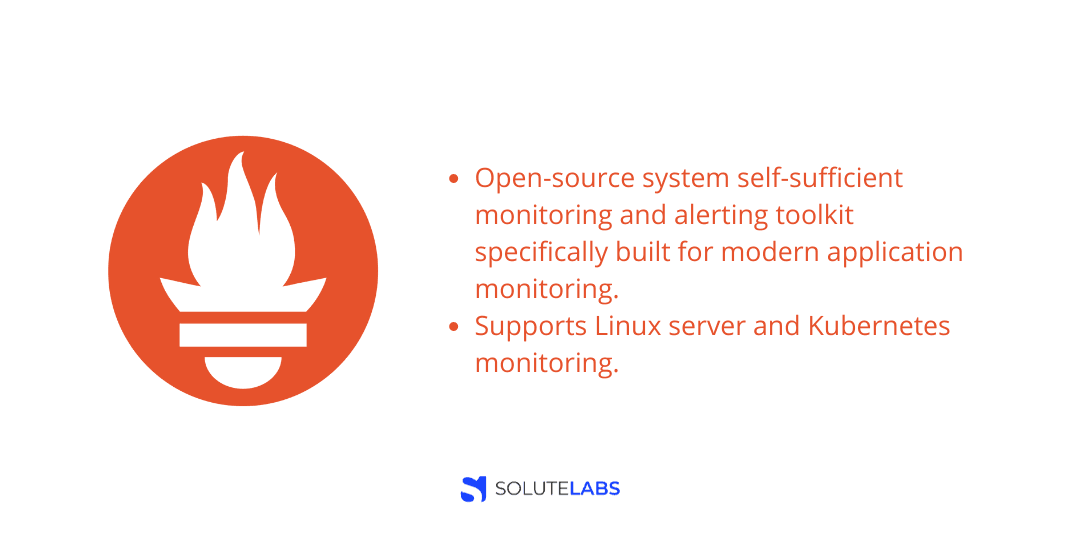
Prometheus is a popular open-source system monitoring and alerting toolkit specifically built for modern application monitoring. It supports Linux server and Kubernetes monitoring and stores its metrics as time series data.
Key Features:
- It uses a simple query language "PromQL", which is a "read-only" and flexible language that allows aggregation across any of the labels stored in its time series.
- We can also use push gateway for supporting short-lived jobs, and special exporters like HAProxy, StatsD, Graphite, etc.
- Prometheus doesn’t rely on distributed storage; it is built to work on a single server node.
- Default libraries and servers available for Prometheus – Windows, Linux, MySQL, etc.
- To monitor custom services, you can also add instrumentation to your code via, Prometheus client libraries like Go, Java or Scala, Python, Ruby, and many more.
Why Should You Go For Prometheus?
Prometheus is a full-fledged, end-to-end monitoring system with its alert manager. So, you don’t have to look for any third-party integrations for alert mechanisms. It’s a self-sufficient monitoring tool.
2. DataDog
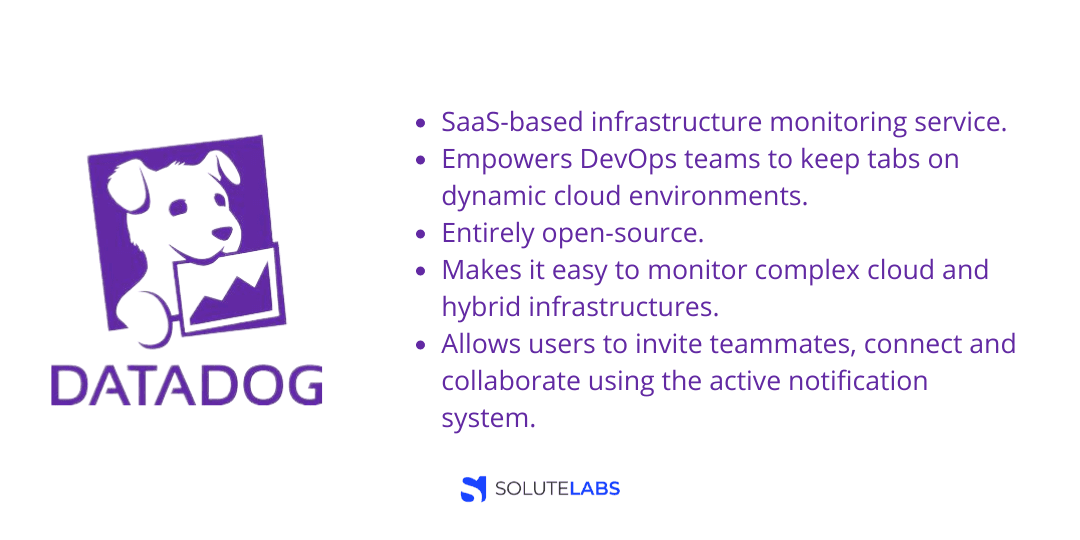
DataDog is a SaaS-based infrastructure monitoring service with hundreds of integrations. It empowers DevOps teams to keep tabs on dynamic cloud environments. This makes it easy to visualize the health of your infrastructure at a high level by location, application, or service. The DataDog agent can run on cloud platforms, bare metal servers, virtual machines, containers, and more, making it perfect for customers with cloud or hybrid infrastructures.
Key Features:
- The DataDog is entirely open-source meaning it’s easy to dig into the code and find out how it collects metrics.
- Out-of-the-box integrations with popular web servers, programming languages, databases, code repositories, and message cues extend the agent to enhance and complement basic monitoring.
- DataDog offers pre-configured dashboards for each installed integration. Users can create custom dashboards to visualize multiple services and applications.
- DataDdog has monitors to trigger critical alerts and notify appropriate individuals.
Why Should You Go For DataDog?
DataDog makes it easy to monitor complex cloud and hybrid infrastructures with dynamic dashboards and alerting. Not to forget how important is collaboration to a well-run DevOps team and DataDog allows users to invite as many teammates, connect and collaborate using the active notification system.
3. New Relic
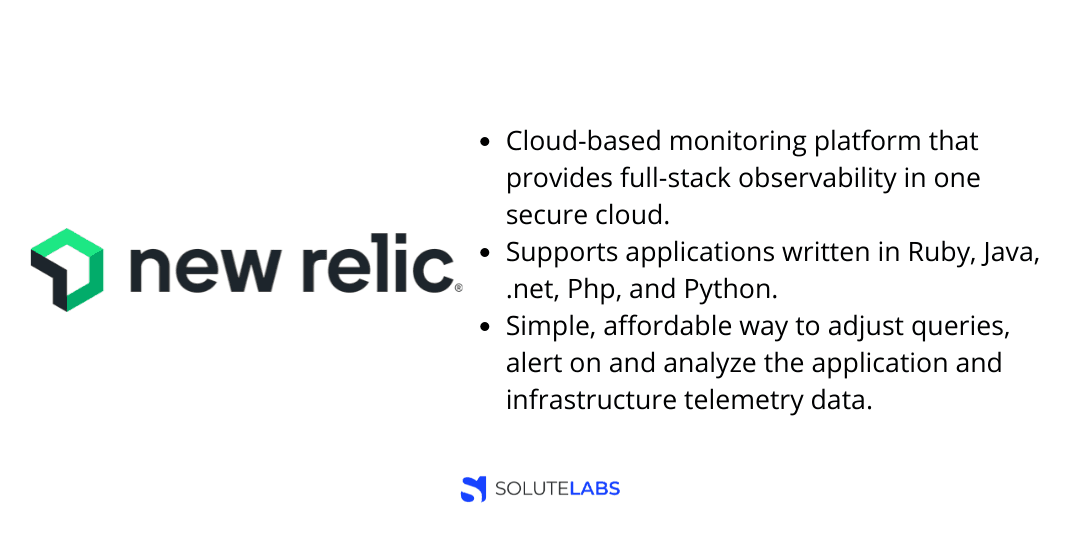
New Relic is a cloud-based monitoring platform that provides full-stack observability in one secure cloud. New Relic supports applications written in Ruby, Java, .net, Php, and Python. Thanks to its pay-as-you-go model, it allows teams to correlate an entire stack to visualize and debug issues faster while paying only for the resources they use.
Key Features:
- Get the full-stack analysis of all your telemetry in one place. Usage-based pricing is available for all services.
- Full-stack monitoring offers a live and in-depth view of your network, infrastructure, applications, end-user experience, machine learning models, and more.
- New Relic Applied Intelligence builds trust with notifications and alerts when a model becomes less accurate.
- The Error Inbox gives every team visibility into all error comments and resolution details and prevents duplications.
- Instant anomaly detection automatically spots unusual changes across all applications, services, and log data.
Why Should You Go For New Relic?
Every organization is swimming in data packed with valuable insights. New Relic provides a simple, affordable way to adjust queries, alert on and analyze the application and infrastructure telemetry data without having to deal with standing up and maintaining anything. All with simple, clear pricing.
4. Sensu
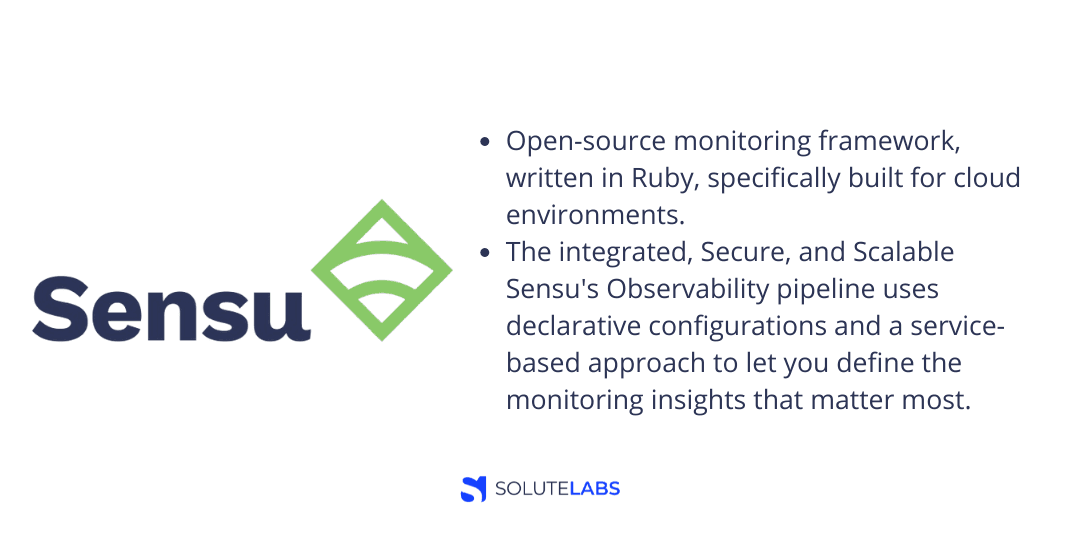
Sensu is an open-source monitoring framework, written in Ruby, specifically built for cloud environments. It does not offer SaaS but you can use this tool to track and measure the health of your infrastructure, apps, and business KPIs the way you want.
Key Features:
- Comprehensive system and service health monitoring with custom scripts, including Nagios-style plugins.
- Eliminate alert fatigue with built-in de-duplication.
- Sensu's auto-remediation triggers service restarts or executes custom scripts when problems are detected.
- Its turn-key integrations are backed by declarative configuration templates that can easily be edited, reviewed, version-controlled, and shared amongst teams.
Why Should You Go For Sensu?
The integrated, Secure, and Scalable Sensu's Observability pipeline uses declarative configurations and a service-based approach to let you define the monitoring insights that matter most. Despite being open source, its commercial support solves modern infrastructure problems.
5. Nagios
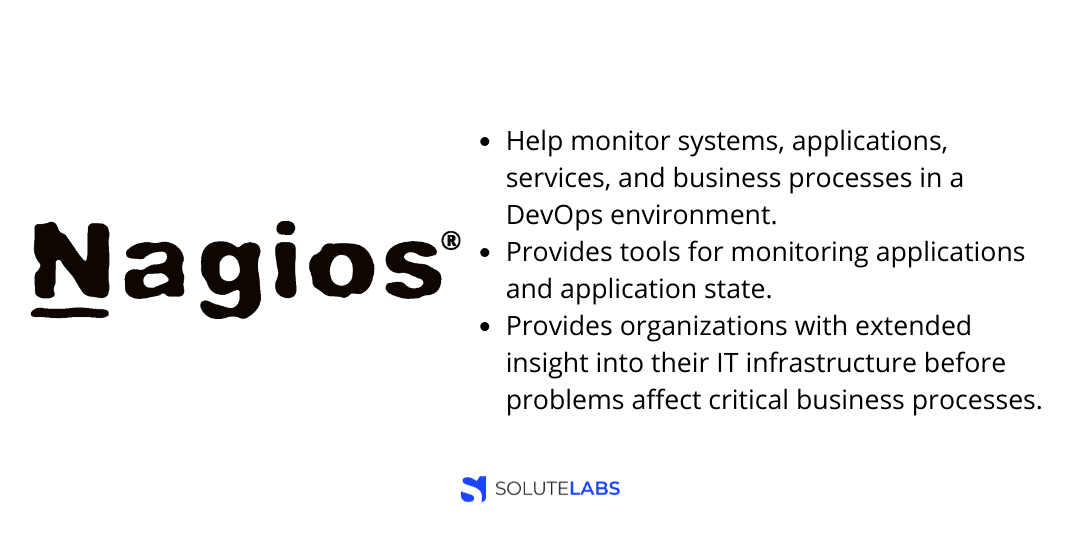
Nagios can help monitor systems, applications, services, and business processes in a DevOps environment. It provides tools for monitoring applications and application state – including Windows applications, Linux applications, UNIX applications, and Web applications.
Key Features:
- This excellent tool performs rapid tests and is simple enough to configure on both client and server sides.
- Monitors routers, switches, and other devices within the network to detect overloading and network problems.
- With over 5000 different addons available to monitor your servers, Nagios offers flexibility to monitor your servers with both agent-based and agentless monitoring.
Why Should You Go For Nagios?
Going beyond basic IT monitoring software capabilities, Nagios XI provides organizations with extended insight into their IT infrastructure before problems affect critical business processes. Best of all, alerts are sent via email or mobile text messages to IT staff and business stakeholders, enabling them to address issues as soon as possible.
6. Sematext
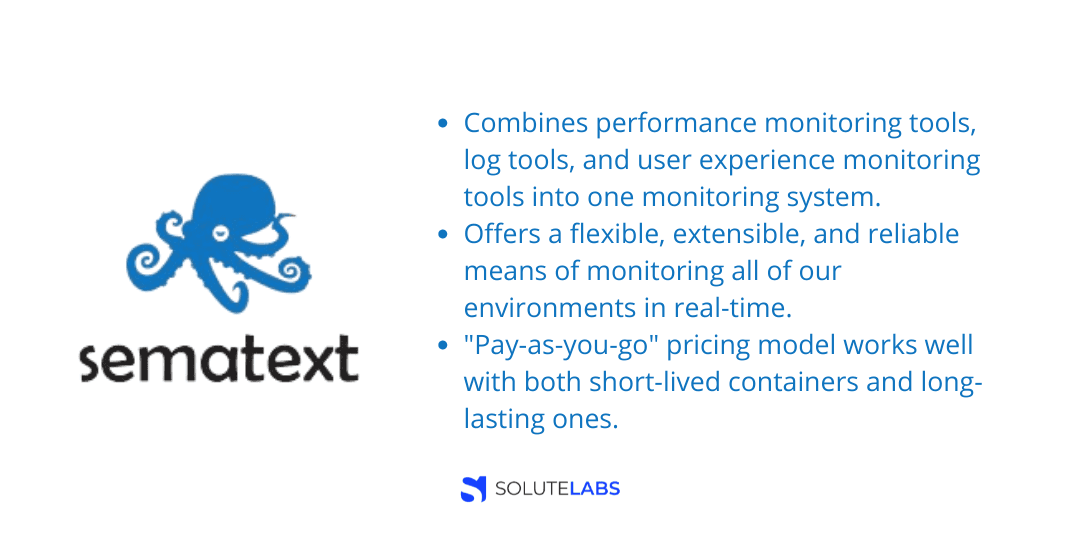
It's not uncommon for vendors to offer only performance monitoring tools, or only log tools, or only user experience monitoring tools. Sematext combines them all into one monitoring system to help organizations troubleshoot issues more quickly. It uses pre-defined or custom dashboards to explore and alert the organizations.
Key Features:
- Faster root cause analysis by tracking infrastructure, database, application, and site response times.
- Anomaly detection and alerts can be set up on both metrics and logs.
- Integrations with Docker, Kubernetes, and Sematext lightweight data shippers let you set your account in no time.
- Analyze metrics in aggregate or filter them based on any metric.
- It features Semantic Synthetics, a synthetic monitoring service to monitor your websites and HTTP APIs.
Why Should You Go For Sematext?
Sematext offers a flexible, extensible, and reliable means of monitoring all of our environments in real-time. And its "Pay-as-you-go" pricing model works well with both short-lived containers and long-lasting ones.
7. Icinga
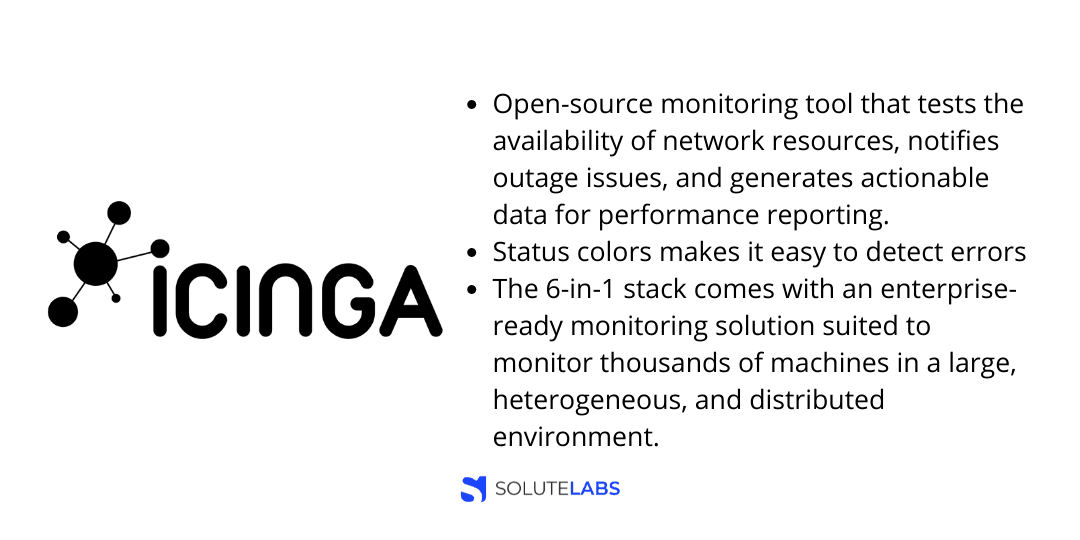
Icinga is an open-source monitoring tool that tests the availability of network resources, notifies outage issues, and generates actionable data for performance reporting. Its fast and well-organized web interface with the five Icinga status colors makes it easy to detect errors at a glance.
Key Features
- Build custom views by filtering and grouping elements. Store them in dashboards.
- Get notified and proactively react to bugs before they cause issues.
- Detail views, business processes, and certificate monitoring: Icinga comes with visualization options for many use cases.
- Its built-in clustering mechanism offers robust configuration possibilities, automation, and scaling.
Why Should You Go For Icinga?
The 6-in-1 Icinga stack comes with an enterprise-ready monitoring solution suited to monitor thousands of machines in a large, heterogeneous, and distributed environment. Plus, its integrations enable you to create tailored monitoring solution that suits your needs.
8. Splunk
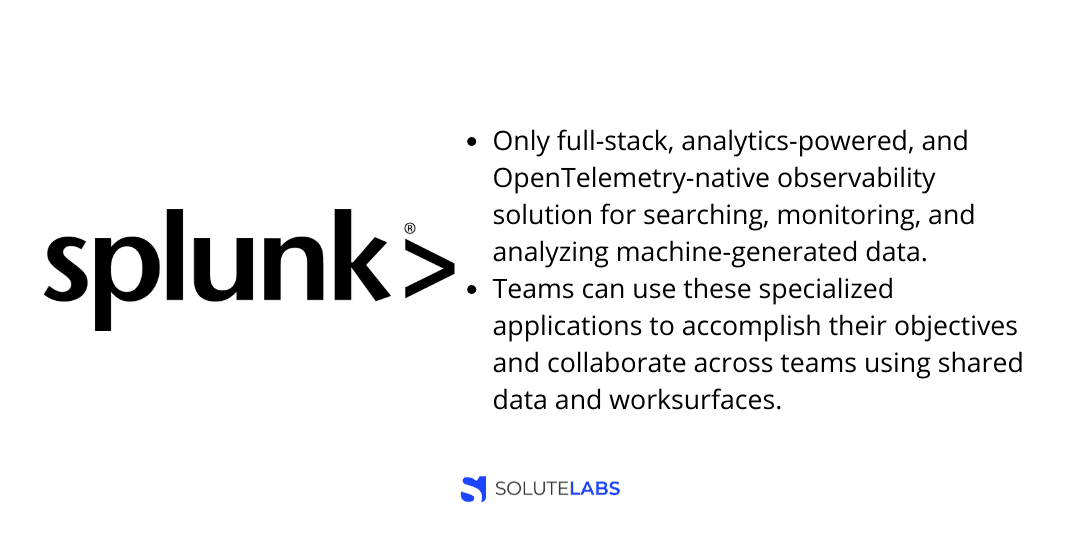
Splunk is the only full-stack, analytics-powered, and OpenTelemetry-native observability solution for searching, monitoring, and analyzing machine-generated data. Splunk delivers end-to-end visibility across your stack, whether you're using packaged, on-premises applications or cloud-native web applications.
Key Features:
- Examines data from networks, servers, and apps.
- With AIOps baked in, it's easy to detect and investigate unusual changes instantly.
- AI-enabled directed troubleshooting provides a bird’s eye view while investigating problems.
- Create custom reports and dashboards for better visibility and detection.
Why Should You Go For Splunk?
With Splunk, you can get full-fidelity observability and a unified security experience. Teams can use these specialized applications to accomplish their objectives and collaborate across teams using shared data and worksurfaces.
9. Zabbix
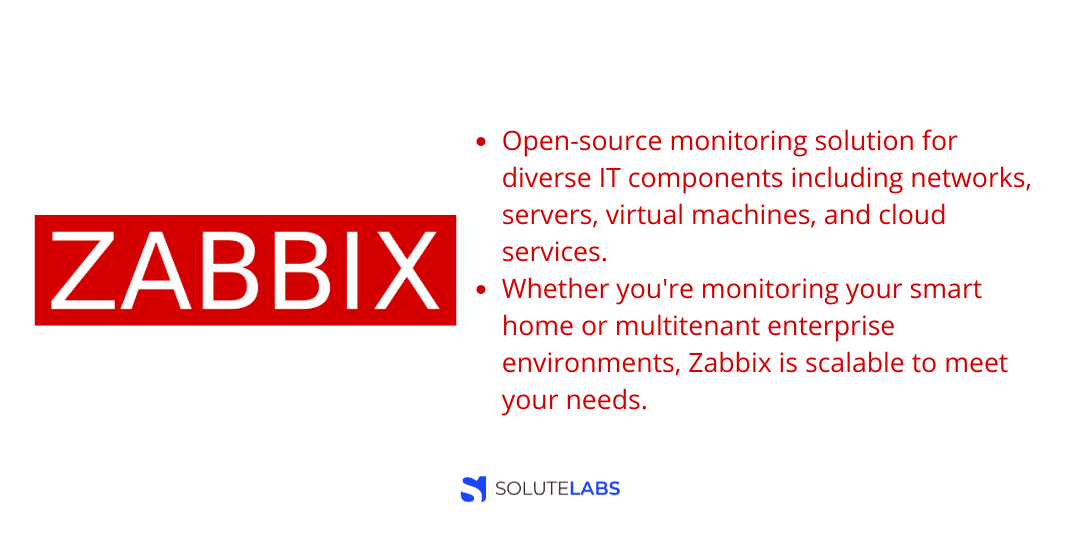
Zabbix is an open-source monitoring solution for diverse IT components including networks, servers, virtual machines, and cloud services. At no hidden extra costs, you can use Zabbix for a lot more than just monitoring. You can also provide monitoring services for multiple customers in a multi-tenant environment.
Key Features:
- Gather desired data from any source at custom intervals.
- Utilize backend database values to define flexible problem thresholds called triggers
- Customize sending notifications as per the escalation schedule, recipient, and media type
- Historical data storage with built-in housekeeping procedure
- A full-featured and easily extensible agent that can be deployed on both Linux and Windows
Why Should You Go For Zabbix?
Whether you're monitoring your smart home or multitenant enterprise environments, Zabbix is scalable to meet your needs. Plus it is backed by integrations with alerting, ticketing, IoT, and ITSM systems and delivers enterprise-level monitoring across the globe.
10. Elasticsearch/Logstash/Kibana (Elastic stack)
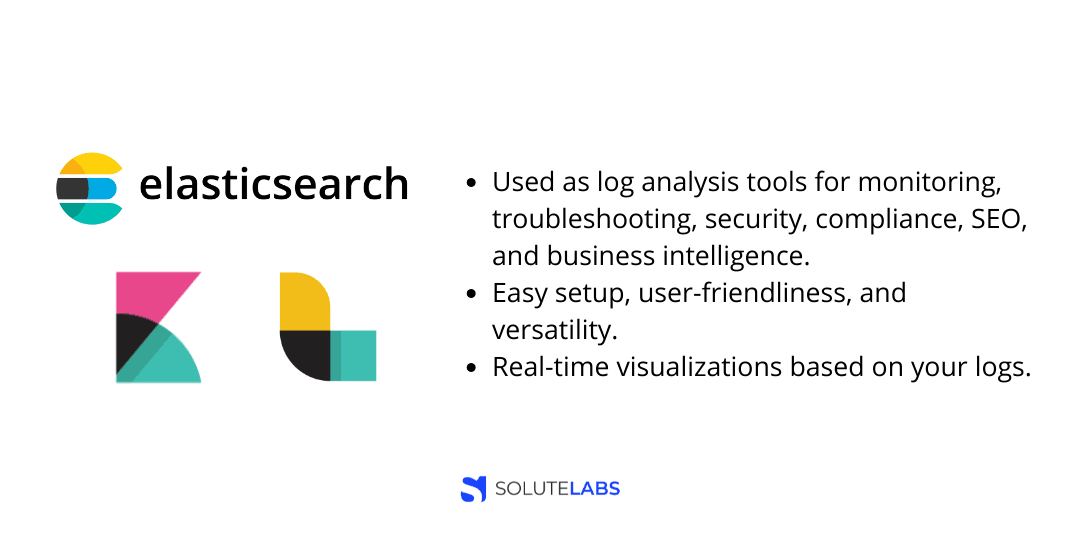
ELK stack is a powerful collection of three open source tools: Elasticsearch, Logstash, and Kibana. Elasticsearch is an open-source, distributed full-text search and analytics engine. Logstash is a data collection pipeline that collects data and feeds it to Elasticsearch. And finally, Kibana is used for data visualization.
Typically, ELK stacks are used as log analysis tools for monitoring, troubleshooting, security, compliance, SEO, and business intelligence.
Key Features:
- Offers multi-stack monitoring where metrics are stored in Elasticsearch, which enables you to easily visualize the data from Kibana.
- Monitor and compare multiple Elastic Stack deployments from a centralized monitoring cluster.
- Configurable retention policy to control how long you hold onto the data.
- Automatic alerts – cluster state, license expiration, and other metrics across ELK stack.
Why Should You Go For ELK Stack?
Easy setup, user-friendliness, and versatility make the ELK stack popular with users. By shipping your data, you'll have access to real-time visualizations based on your logs without having to pre-aggregate, giving you a completely new perspective.
11. Epsagon
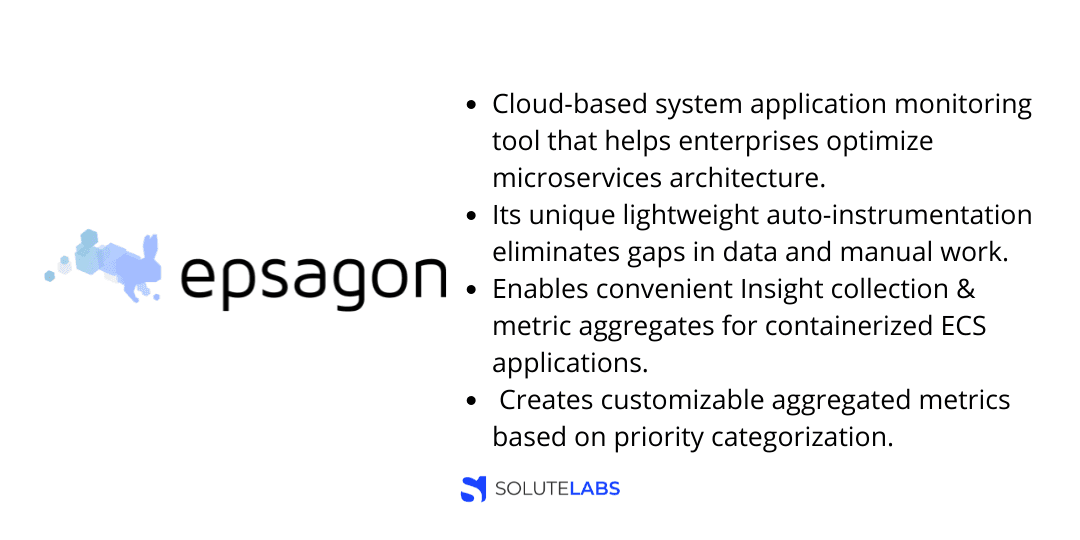
Epsagon is a cloud-based system application monitoring tool that helps enterprises optimize microservices architecture. Its unique lightweight auto-instrumentation eliminates gaps in data and manual work associated with other APM solutions, reducing issue detection, root cause analysis, and resolution times.
Key Features:
- Epsagon's lightweight agent runs on the language of your choice – NodeJS, Python, Go, Java, Ruby, and .NET.
- Manage alerts and issues in one interface called the Issues Manager, which aggregates and correlates production data faster
- With Epsagon, Traces, Logs, and Metrics are all correlated, making troubleshooting easy.
- Custom dashboards to monitor important metrics and deliver full-stack observability
- Visualize performance metrics and analyze trends using service maps.
Why Should You Go For Epsagon?
Epsagon enables convenient Insight collection & metric aggregates for containerized ECS applications. It also creates customizable aggregated metrics based on priority categorization.
12. HoneyComb
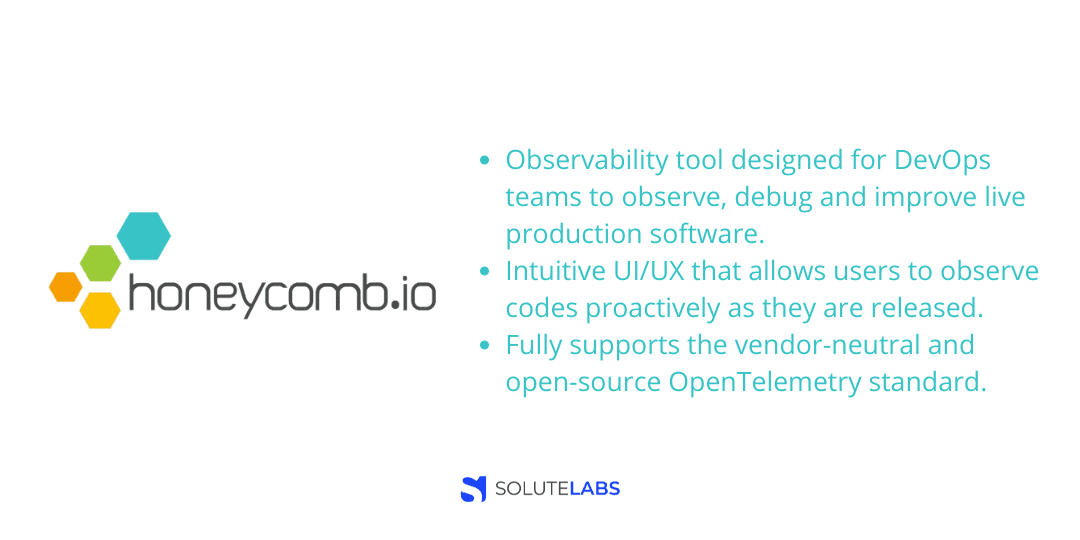
Honeycomb is an observability tool designed for DevOps teams to observe, debug and improve live production software. Its intuitive UI/UX allows users to observe codes proactively as they are released.
Key Features:
- Fast Feedback loops to enable reliable shipping of performant features
- Find outliers with BubbleUp that automates commonalities detection against high-cardinality and high-dimensionality events
- Define, measure, validate, and adjust engineering priorities with Service Level Objectives (SLOs)
- Dive into traces, queries, or visualizations with distributed tracing without getting lost
Why Should You Go For HoneyComb?
HoneyComb’s Enterprise ready features are designed to speed up your organization-wide observability adoption initiatives. The software fully supports the vendor-neutral and open-source OpenTelemetry standard.
13. OpsGenie
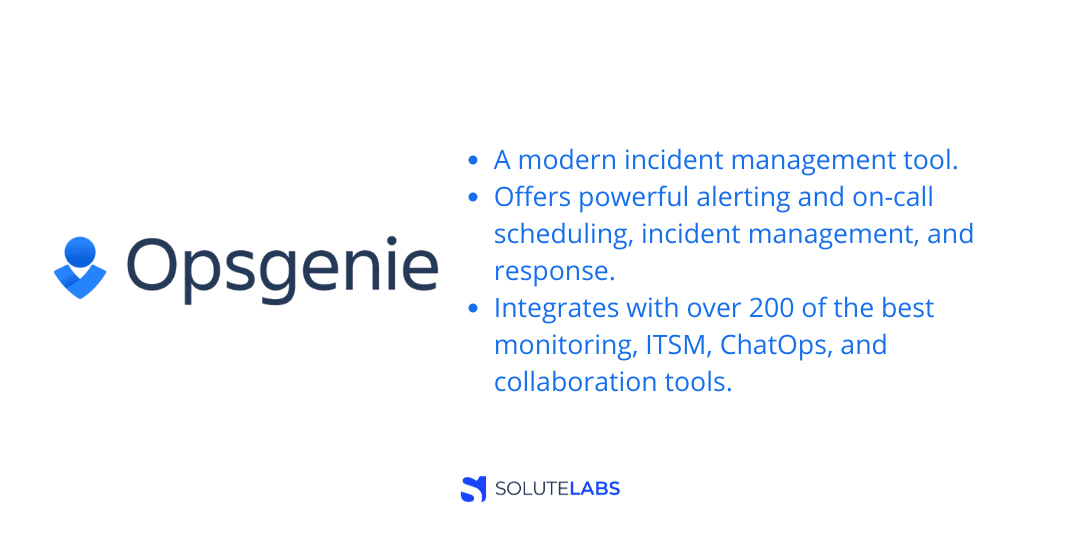
A modern incident management tool, OpsGenie offers powerful alerting and on-call scheduling, incident management, and response. Though cheaper than its counterparts, the tool doesn't shy away from the benchmarks.
Key Features:
- OpsGenie uses multiple notification channels to group alerts, filter the noise, and notify the user.
- Handle alerts based on their source and payload with customizable on-call schedules and routing rules.
- Dynamic reporting and analytics provide insights for improvement in the on-call and alerting processes.
- Organize virtual war rooms to coordinate the response of multiple teams and keep stakeholders informed.
Why Should You Go For OpsGenie?
Opsgenie integrates with over 200 of the best monitoring, ITSM, ChatOps, and collaboration tools to empower Dev & Ops teams to plan for service disruptions and stay in control during incidents. Also, its simple UI makes it easy for users to define complex alerting rules.
14. Grafana
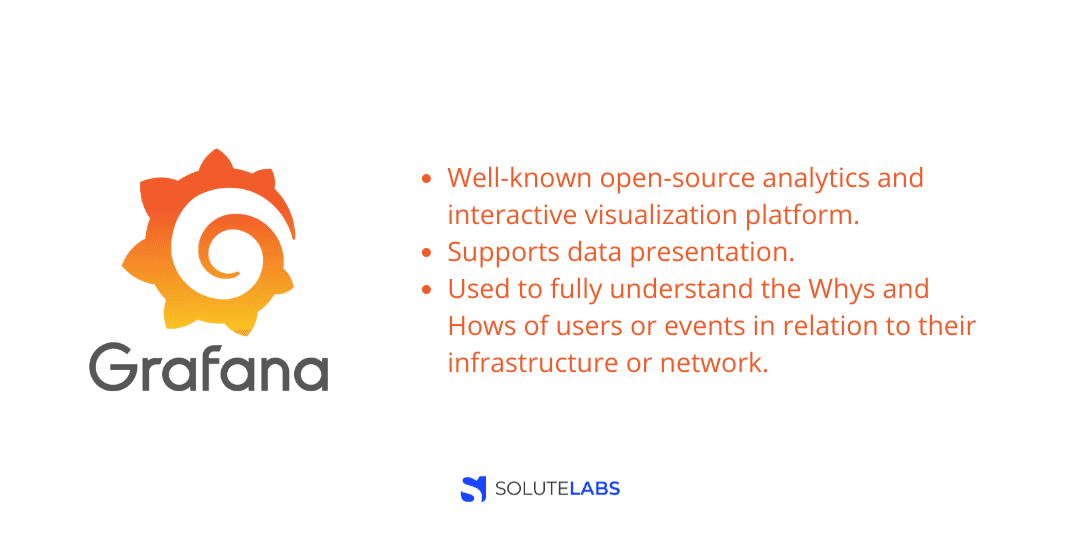
Grafana is well-known open-source analytics and interactive visualization platform. Besides context-rich visualizations through graphs, it also supports data presentation methods using pluggable panel architecture.
Key Features:
- Dashboard templating helps create a dashboard setup to suit every need.
- Grafana features provisioning to automate setup using a script and control multiple dashboards.
- Generate annotations on the graphs or fetch data from any data source
- Kiosk mode and playlist allow TV display of dashboards and hide unwanted elements from the user interface
- Extend functionalities with plugins like Worldmap Panel, Zabbix, Influx Admin Panel, and more.
- Easy to code alert hooks that create different notifiers.
Why Should You Go For Grafana?
Companies that use Grafana fully understand the Whys and Hows of users or events in relation to their infrastructure or network. It runs on Kubernetes clusters and the back end is compatible with Prometheus and Graphite. So, you have the choice of using a Grafana cloud instance or both.
15. Dynatrace
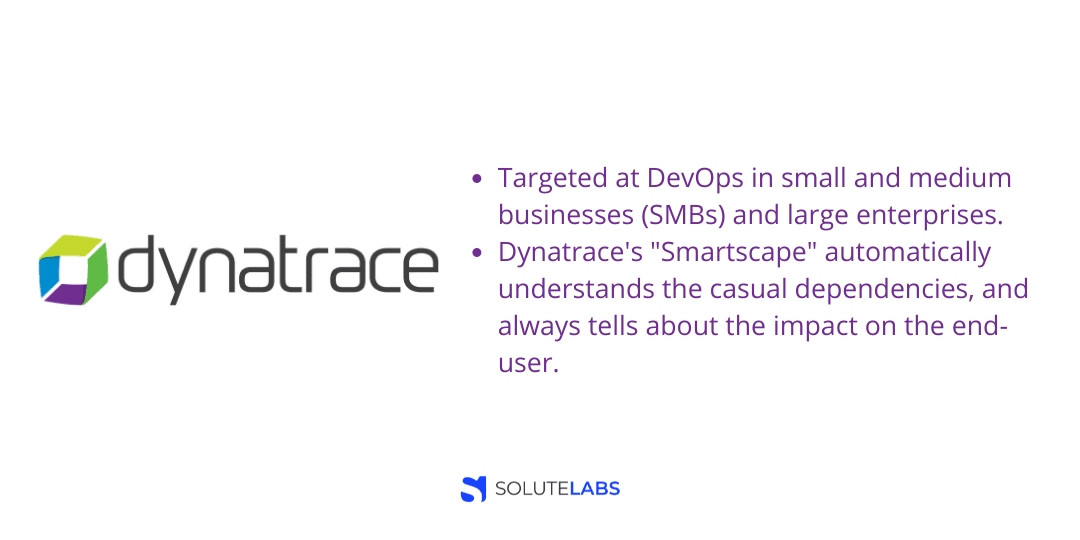
A comprehensive application monitoring solution, Dynatrace is targeted at DevOps in small and medium businesses (SMBs) and large enterprises. With an open ecosystem, users can integrate Dynatrace into their IT landscape using open API.
Key Features:
- Monitor real-users, applications, clouds, servers, networks, and infrastructure all in one place instead of multiple tools
- Automated dependency discovery and easy deployment
- Root-cause analysis using AI analytics with fewer alerts (Dynatrace calls this a "no-alerts" technology).
- WebUI, Java, node.js, and .NET-based app support
Why Should You Go For Dynatrace?
Nothing is static in SaaS environments. It's important to understand how multiple components interact and which end-user is impacted. Dynatrace's "Smartscape" automatically understands the casual dependencies, and always tells about the impact on the end-user. No matter what the problem – IO, nodeJS, AWS, Web Server, 3rd parties like Facebook, Java or JavaScript exception, Dynatrace gives you the root cause right away.
16. Sumo Logic
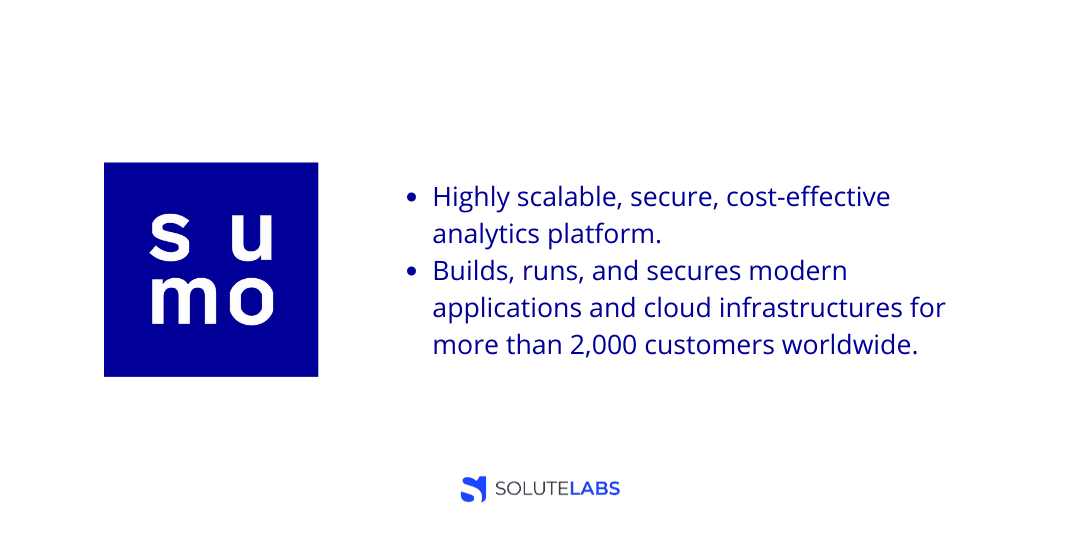
A highly scalable, secure, cost-effective analytics platform, Sumo Logic's Application Observability solution provides insight into performance metrics, logs, and events, as well as distributed transaction tracing.
Key Features:
- Automated discovery of new services and infrastructure in pre-configured dashboards
- Diagnose application issues faster by visualizing the service dependencies in service maps
- Real user monitoring tracks each click across the application and quickly surfaces poor-performing pages.
- Leverages ML-powered Root Cause Explorer to automate anomaly detection
- Global intelligence benchmarks of popular stacks like Apache, NGINX, and Kubernetes
- An extensive catalog of preconfigured solutions offers entity drill down
Why Should You Go For Sumo Logic?
Sumo Logic builds, runs, and secures modern applications and cloud infrastructures for more than 2,000 customers worldwide. Businesses can thrive in the intelligence economy by deploying Sumo Logic's platform as a true, multi-tenant SaaS architecture.
17. PagerDuty
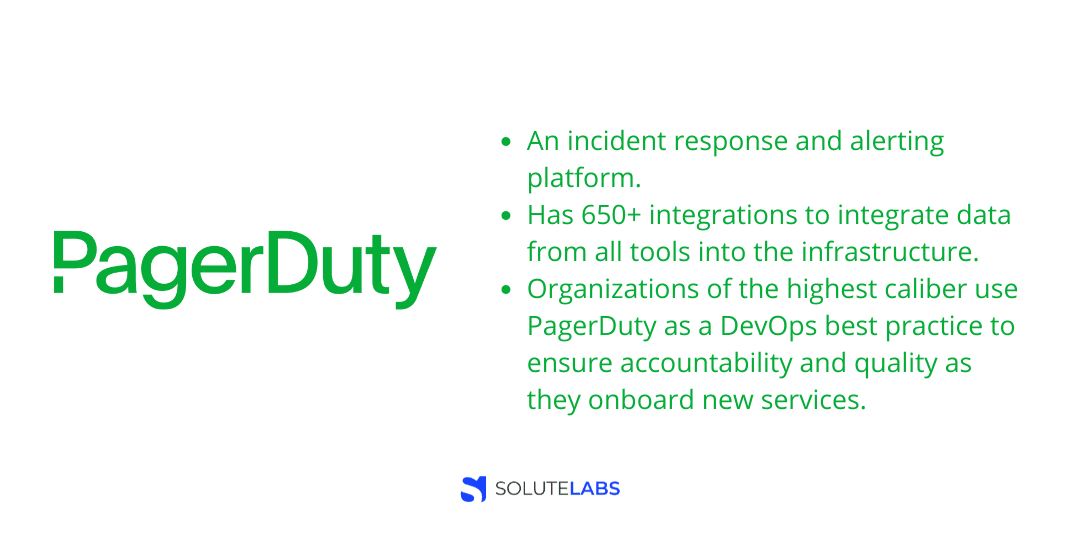
PagerDuty is an incident response and alerting platform that collaborates closely with operations professionals to monitor app dependability and performance and address faults as soon as feasible. The software's alerting and incident tracking system is cloud-based, so it can be modified and configured anywhere, anytime.
Key Features:
- On-call management and notifications help dispense on-call responsibilities across multiple teams and departments.
- End-to-end response automation designs the right action for any incident level.
- PagerDuty’s Event intelligence delivers in-depth contextual insights, automating repetitive work and processes
- PagerDuty analytics curates the most crucial analytics queries for more in-depth insights.
Why Should You Go For PagerDuty?
Organizations of the highest caliber use PagerDuty as a DevOps best practice to ensure accountability and quality as they onboard new services. It has 650+ integrations which means you can integrate all data from all your tools into your infrastructure.
18. Amazon CloudWatch
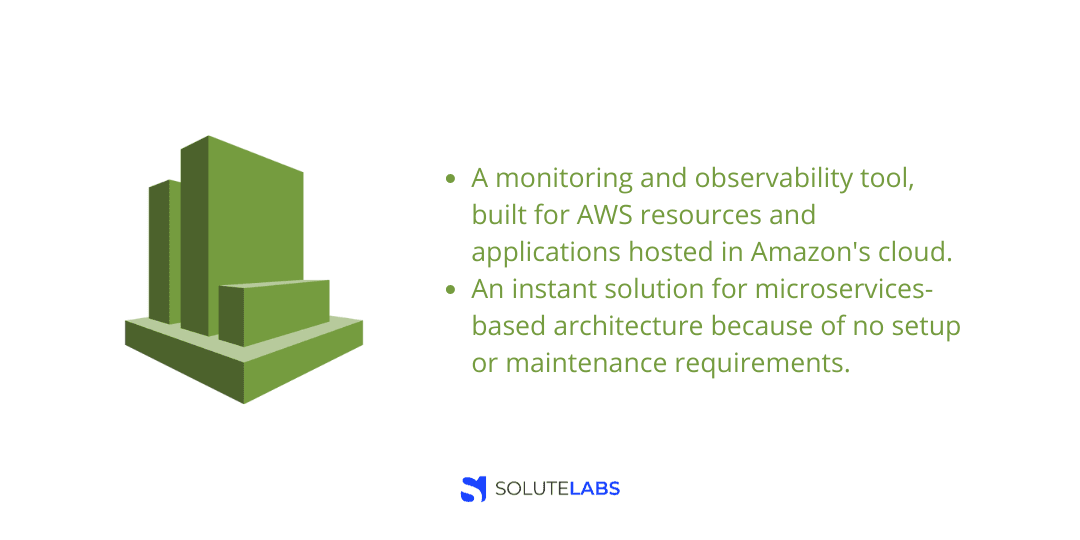
A monitoring and observability tool, Amazon CloudWatch is built for AWS resources and applications hosted in Amazon's cloud.
With CloudWatch, you can monitor applications, respond to system-wide performance changes, and optimize resource utilization using data and actionable insights.
Key Features:
- Amazon CloudWatch dashboards provide a unified operational view with reusable graphs and visualization of cloud resources and applications.
- Combine multiple alarms and reduce alarm noise with Amazon CloudWatch composite alarms
- High-resolution alarms allow you to set a threshold on metrics and trigger an action.
- Easy log and metric correlation
- Application Insights provides an automated setup of observability for your enterprise applications
- Container Insights provides automatic dashboards to summarize errors, and alarms by clusters and compute the overall performance.
Why Should You Go For CloudWatch?
CloudWatch is an instant solution for microservices-based architecture because of no setup or maintenance requirements. As a result, the DevOps team can identify issues across the container infrastructure more quickly, reducing MTTR (mean time to repair).
Also, read: AWS vs Azure vs Google Cloud
19. AppDynamics
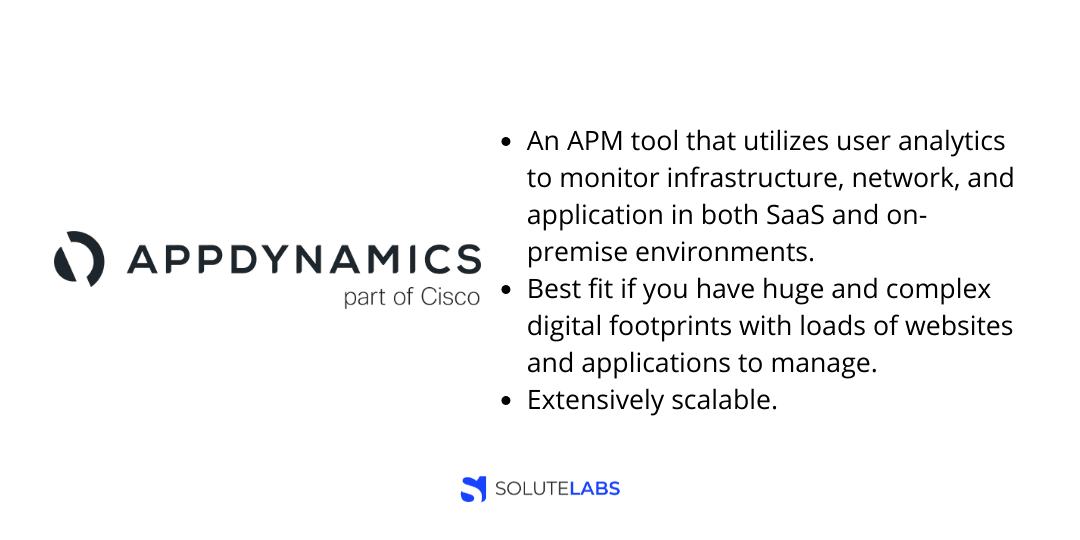
AppDynamics is an APM tool that utilizes user analytics to monitor infrastructure, network, and application in both SaaS and on-premise environments. AppDynamics captures out-of-the-box metrics using custom dashboards without any code instrumentation.
Key Features:
- Best-in-class monitoring tools for cloud and infrastructure allow you to modernize applications, cut costs, and boost innovation.
- Integrate your hybrid environment with your business and user experience outcomes to prevent downtime
- Streamline your operations with Amazon CloudWatch and AWS services, including Microsoft Azure and other cloud environments.
- Automated data collection and correlation of cloud-native services to application code, user experience outcomes, and their impact on business metrics.
- ITOps and InfraOps working in sync break down team silos and boost efficiency
Why Should You Go For AppDynamics?
If you have huge and complex digital footprints with loads of websites and applications to manage. AppDynamics is the best fit for monitoring service. Best of all, you're free to go for the free version or the quoted version depending on your needs. The tool is extensively scalable.
20. Librato
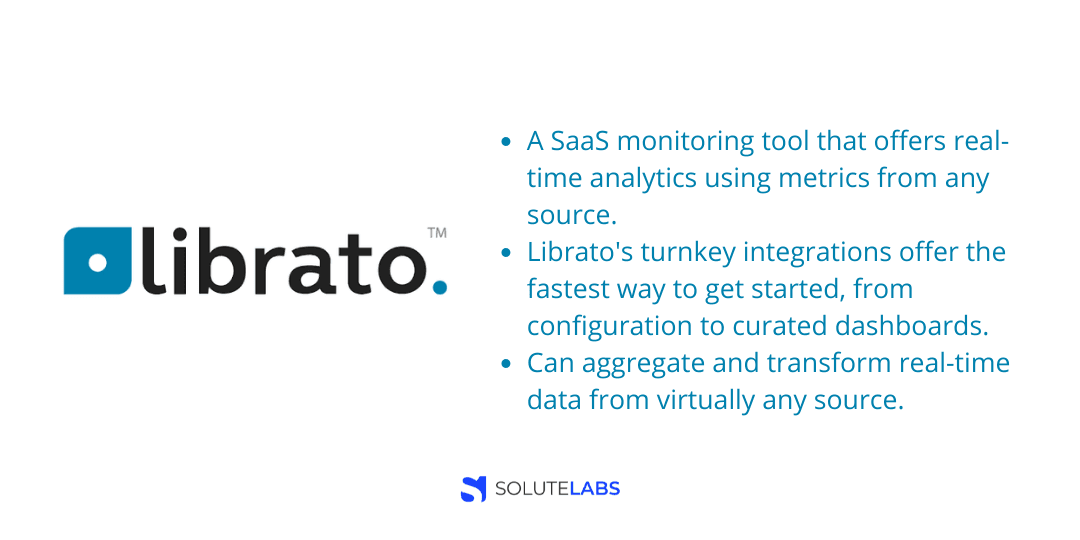
Librato is a SaaS monitoring tool that offers real-time analytics using metrics from any source. Users can leverage Librato to aggregate, transform and correlate the important metrics irrespective of their origin.
Key Features:
- Transform custom infrastructure, application, and business metrics into insights
- Get a bird’s-eye view of your infrastructure on a single screen.
- Solve application performance issues using simplified service-level and trace-level root cause summaries
- 150+ cloud-ready integrations fetch data straight from the source without any agents required.
Why Should You Go For Librato?
Librato's turnkey integrations offer the fastest way to get started, from configuration to curated dashboards for server metrics, Docker, Redis, AWS Cloudwatch, and more. The tool can aggregate and transform real-time data from virtually any source.
21. Monit
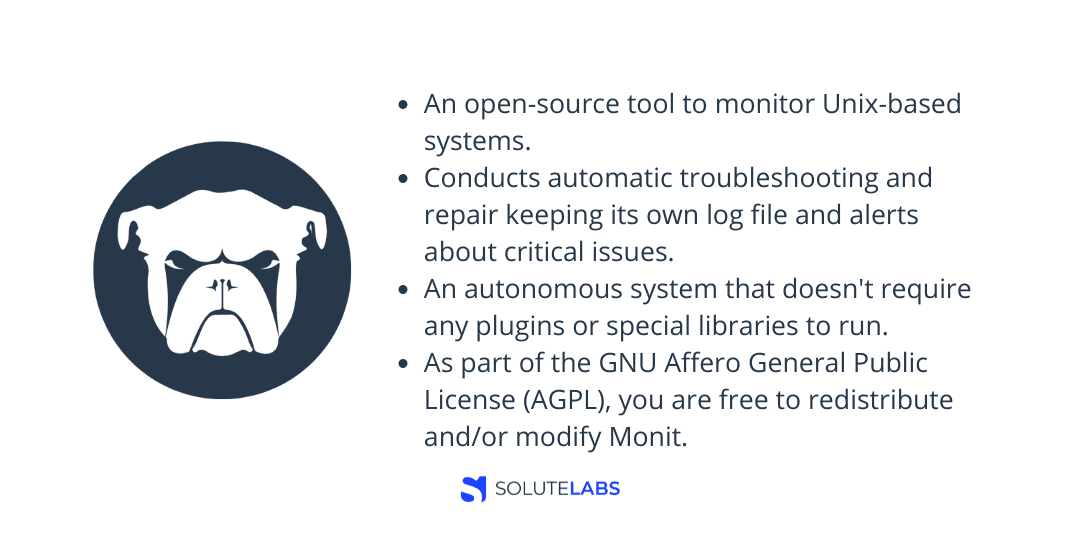
Monit is an open-source tool to monitor Unix-based systems. It conducts automatic troubleshooting and repair keeping its own log file and alerts about critical issues.
Key Features:
- Easy install and setup - turn key.
- Access M/Monit from desktops, tablets, and phones with a responsive user interface.
- Establish dependencies between services and monitor them in active, passive, and manual modes
- Using managed hosts, you can start, stop, restart, and toggle monitoring of services remotely
- Reports on host and service uptime, a service error, and recovery alerts
- SQL database connection pooling with full features built-in. The software supports SQLite, MySQL, and PostgreSQL
Why Should You Go For Monit?
Monit is an autonomous system that doesn't require any plugins or special libraries to run. It uses your existing infrastructure right out of the box and works right away. Moreover, Monit is an open-source, free program. As part of the GNU Affero General Public License (AGPL), you are free to redistribute and/or modify Monit.
Also, read: 6 Best Mobile DevOps Platforms for Faster Application Development
The Closing Phrase
Continuous DevOps monitoring is not only about limiting outages, initiating rapid responses, and achieving business targets. It’s also about enhancing visibility in the pre-production environment to identify problems before deployment. This makes it a must to ensure the DevOps toolchain matches the organization's capabilities—budget, legacy systems and workflows, and requirements.
When choosing a monitoring solution, prefer the tools that offer full stack end-to-end observability along with integration and interoperability between operational tools, ITSM tools, and AIOps tools. This provides event correlation and analytics, enabling DevOps teams to accelerate troubleshooting and remediation.
Ultimately, you want to make the most out of data. So, go for focused monitoring solutions that are easy to set up and deliver heaps of actionable data.






